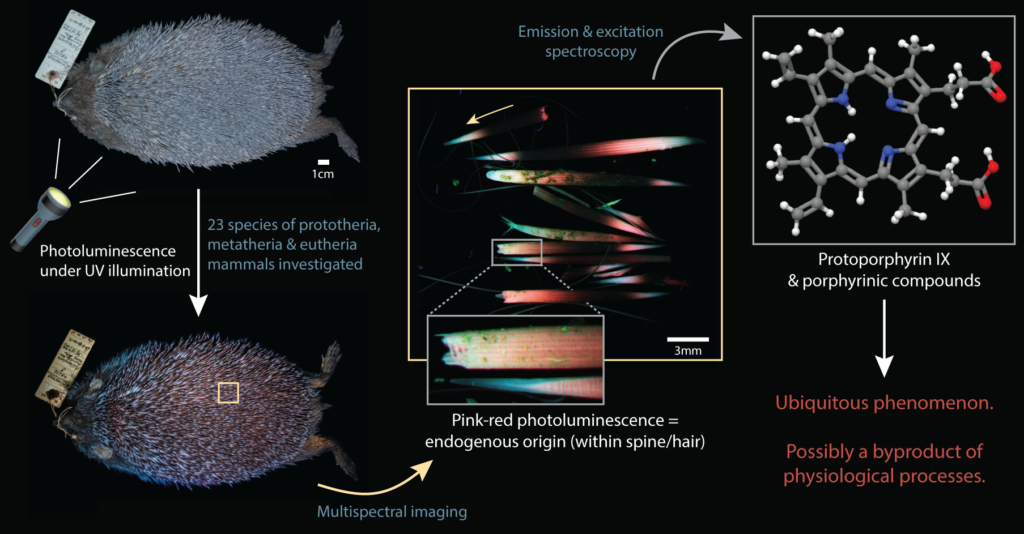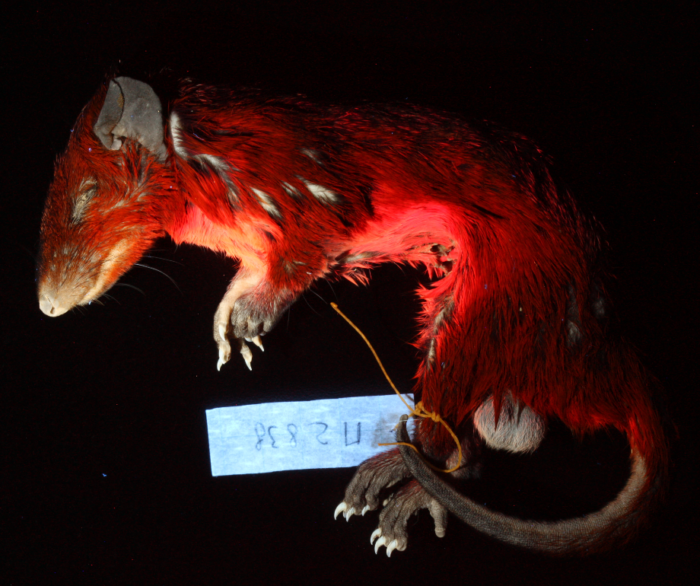The fur of various mammal species has been discovered to glow in shades of red and pink when illuminated by ultraviolet (UV) lamp, through a phenomenon known as photoluminescence. In UV-photoluminescence, UV light is absorbed by a substance and reemitted as a visible colour that depends on its absorption properties. Early works found UV-photoluminescence in nocturnal mammals, but not in their diurnal (i.e. daytime active) closely related relatives, suggesting that it has an ecological role, for example as a way to attract mates and communicate with members of the same species, or to camouflage themselves.
In an article published today in the Integrative Zoology journal, our international team led by researchers at the Humboldt University in Berlin and at the Museum für Naturkunde Berlin, and gathering researchers from institutions based in Germany, France, Switzerland, Sweden and Norway, dismisses this hypothesis and proposes an alternative cause for this widespread phenomenon. Building on new approaches developed at IPANEMA by Mathieu Thoury and I for the study of ancient materials, we identified free-base porphyrin molecules, a family of organic colorant, as the source of the red-glowing fur using photoluminescence excitation spectroscopy. We also investigated the spatial distribution of the observed UV-photoluminescence using an innovative multispectral imaging setup, and found that the porphyrinic compounds have an endogenous origin.

My colleagues also observed a rapid loss of UV-photoluminescence over time in the lab, because porphyrins rapidly break apart when exposed to sunlight. Porphyrins are produced by many organs in mammals, yet an overproduction can lead to severe diseases and skin lesions. Mammals can prevent accumulation of porphyrins by using their hair as storage, where sunlight effectively breaks down these molecules. We therefore argue that, rather than serving an ecological function, the fur UV-photoluminescence results from the body’s waste management of porphyrins. This explains why nocturnal mammals luminesce but their diurnal relatives do not – both store porphyrins in their fur, but the breakdown is much faster when the sun is shining.
Finally, as we analyzed mammal species distantly related, our findings imply that this process is widespread in mammals, and we foresee that many more discoveries of glowing mammals will be made in the future.
Reference: Toussaint S.L.D., Ponstein J., Thoury M., Métivier R., Kalthoff D.C., Habermeyer B., Guilard R., Bock S., Mortensen P., Sandberg S., Gueriau P. & Amson E. 2023. Fur glowing under ultraviolet: in situ analysis of porphyrin accumulation in the skin appendages of mammals. Integrative Zoology 18: 15–26. Find the article (Open Access) here
